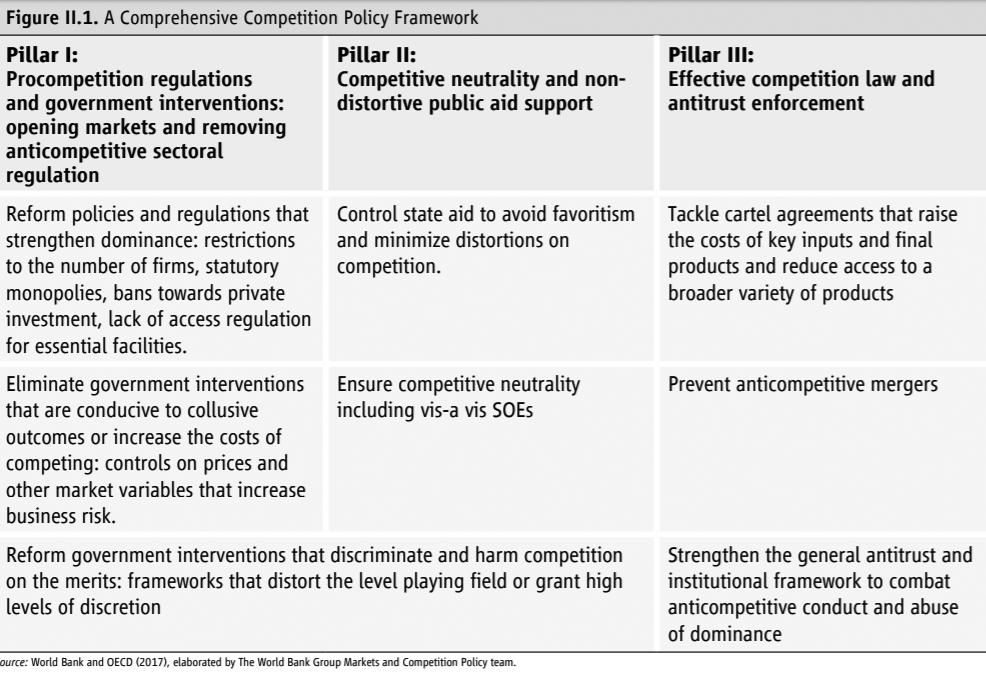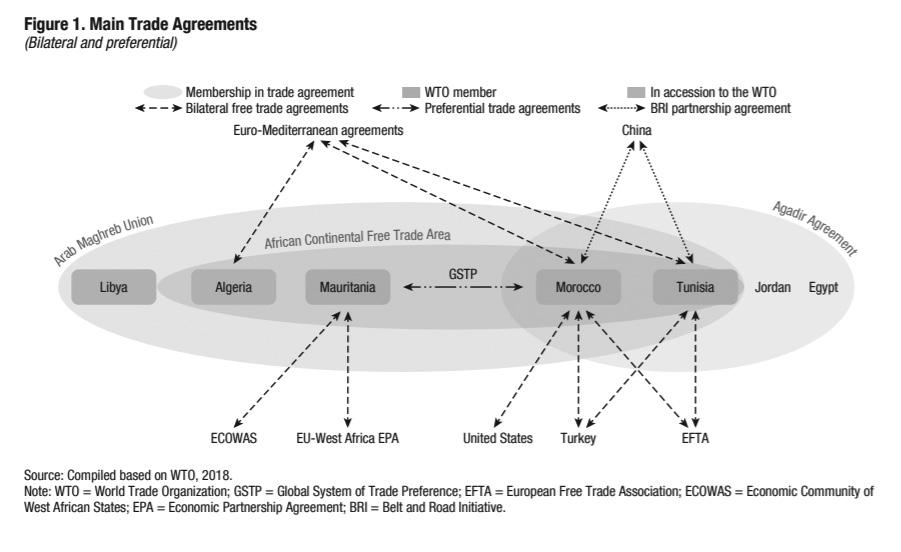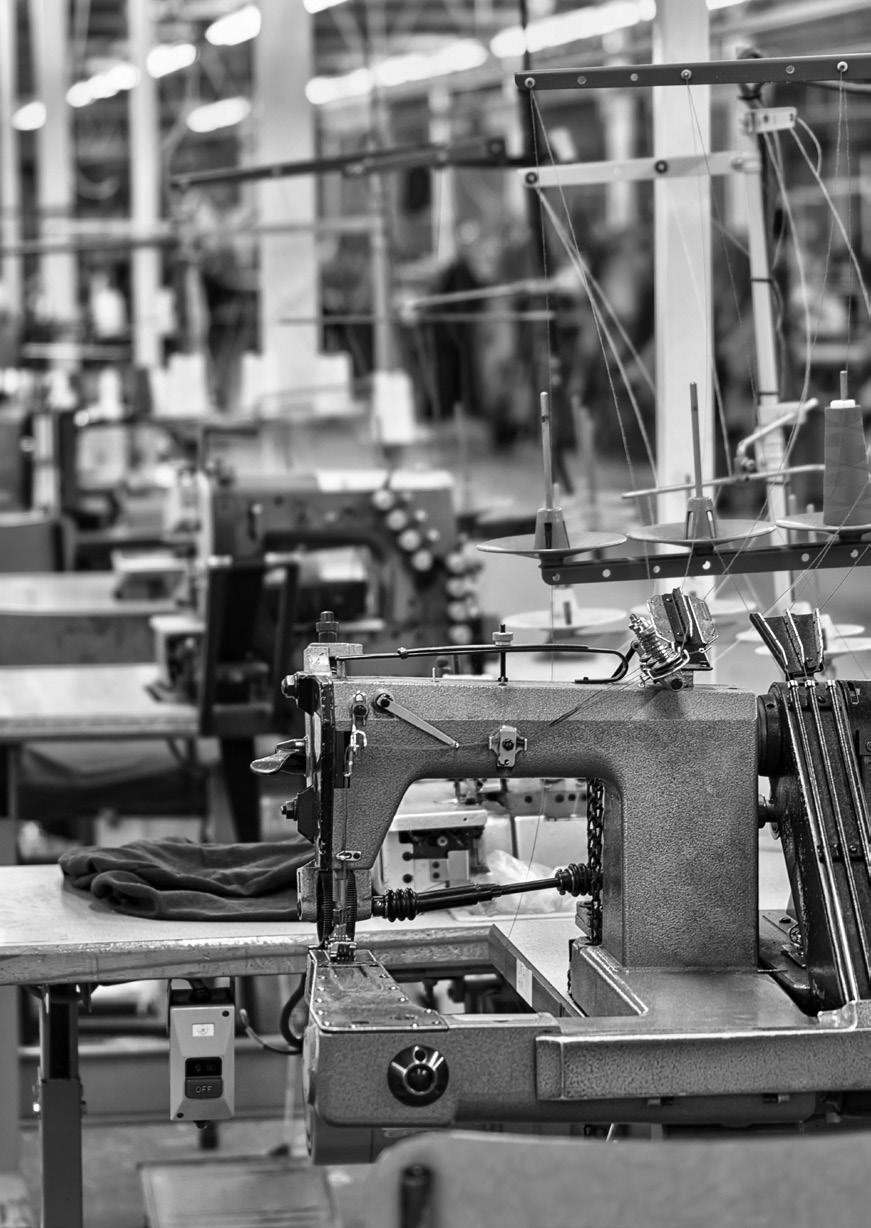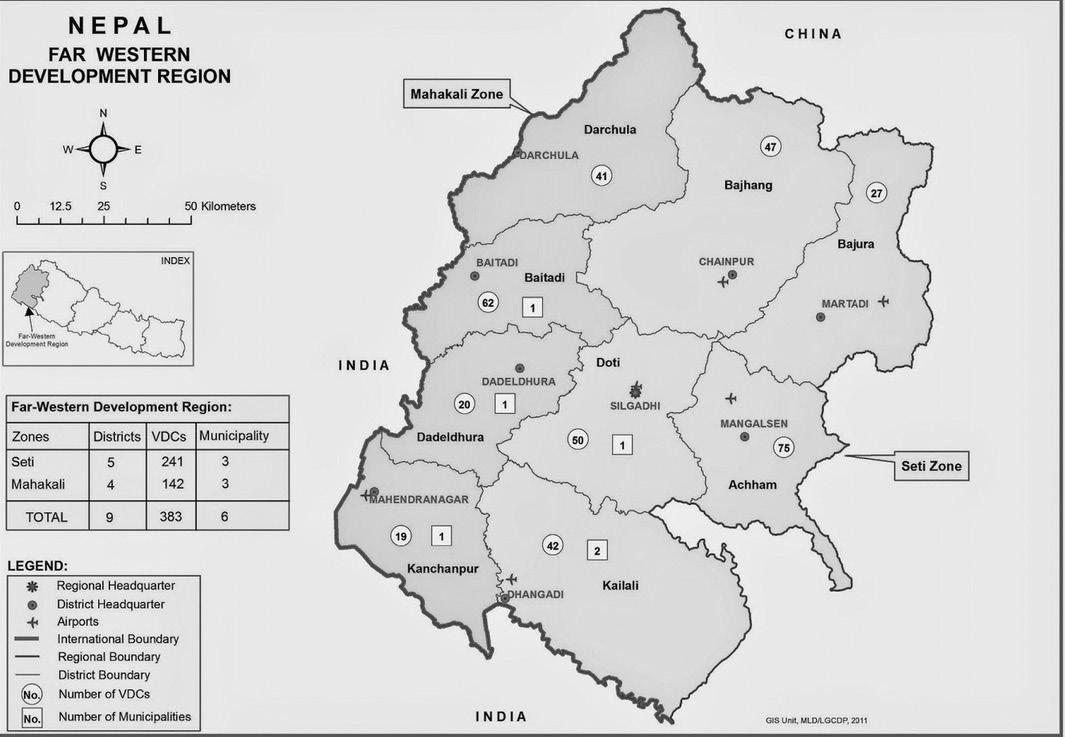
19 minute read
Promoting Economic Development in the Middle East and North Africa (MENA) Region
graduates into the large public sectors, leading to a decreased emphasis on STEM while in school. With workers oversaturating the public sector and the private market demanding knowledge of both math and science, the educational curriculum needs to be reoriented around STEM subjects for the up and coming youth. Additionally, the education experience should encourage greater openness to innovation and risk-seeking, traits rewarded in the tech industry, in contrast to the conservative nature of students currently produced in the region. These changes should focus on critical thinking, managerial, and collaborative work arrangement skills.40 With companies like Careem, a mobile ride-hailing business going from a start-up to a billion-dollar company in MENA, other companies and educated youth need to follow suit.41
SOLUTION 8:
MENA has some of the lowest internet penetration rates compared to other regions in the world, hovering barely above 40% of the population. 42 In Southeast Asia, by contrast, the digital economy is increasing at an exponential rate, and will move from $32 to $300 billion from 2015 to 2025 according to Al Jazeera (see Appendix G ).43 Countries in Southeast Asia have done some things to maximize both their internet penetration and digital economies, such as investing in wireless, sharing infrastructure, putting public services
40 Arezki, Rabah, Mottaghi, Barone Yuting Fan,
Kiendrebeogo, and Lederman 41 Somerville, Heather. “Uber Buys Rival Careem in $3.1
Billion Deal to Dominate Ride-Hailing in Middle East.”
Reuters. Thomson Reuters, March 26, 2019. https:// www.reuters.com/article/us-careem-m-a-uber/uberbuys-rival-careem-in-3-1-billion-deal-to-dominate-ridehailing-in-middle-east-idUSKCN1R70IM. 42 Clement, J. “Global Regional Internet Penetration Rate 2019.” Statista, January 7, 2020. https://www.statista. com/statistics/265149/internet-penetration-rate-byregion/. 43 Al Jazeera. “Online All the Time: Southeast Asia’s
Booming Internet Economy.” News | Al Jazeera. Al
Jazeera, October 4, 2019. https://www.aljazeera.com/ ajimpact/online-time-southeast-asia-booming-interneteconomy-191003101641367.html. online, and letting private companies, such as Grab and Gojek, be leaders of innovation.44 Clearly the digital economy will be the future of economic expansion in the 21st century and for MENA to adequately seize the market opportunity that the digital economy presents, it must first increase the ubiquity of internet connectivity. MENA as a region should follow after Southeast Asia, combining both public and private initiatives to create expansive internet connectivity. While MENA’s rulers as a whole may have a sensitive touch to internet connective after the Arab Spring since services like WhatsApp were instrumental in unifying the efforts, it is high time for MENA to join the digital economy or face the risk of missing the clearest link to global markets that the 21st century has to offer. This connectivity is a prerequisite for technological advancements, e-commerce, and training.45 Investments by private and public enterprises in the technological infrastructure should be taken, with specific focus on universal internet connectivity.
RECOMMENDED SOLUTION
With most economic proposals, it is tempting to become so fixed upon the potential future, that policy implementation realities get overlooked, leading to a naively optimistic proposal that can miss the practicality of implementation, and in turn any true benefits. Although all the previous solutions are feasible, some have major hindrances in policy adoption, due to different situations state to state, fighting massive cultural changes, and funding the proposals. With that said, the recommended proposal combines solutions 3 and 5-8 with these solutions further segmented into a short term and long-term strategy. To begin in the short term, solutions 5,7, and 8, must be intermixed. The short-term levers will determine the longterm outcome for economic growth in MENA,
44 Al Jazeera 45 “Sustainable Investment in the Middle East and North
Africa Region Repo.” ifc.org, January 2011. https:// www.ifc.org/wps/wcm/connect/topics_ext_content/ifc_ external_corporate_site/sustainability-at-ifc/publications/ publications_report_sustainableinvestmentmena__ wci__1319577030052.
with the short-term levers of investing in the digital infrastructure (solution 8) and reforming the education systems to spur on social changes in technological and women engagement (solutions 5 and 7). The combination of these solutions brings together the latent potential of marginalized workers and increases short term digital access to credit for businesses. This short-term solution advocates for three main points. One, a call for the educational systems to funnel their young professionals to the technologically driven private sector and focus on training its pupils in STEM-focused critical thinking. Two, a call to both the public and the private sectors to unify the region with universal internet connectivity and implement digital financing tools. Three a call to shift the educational process to de-stigmatize women accessing the labor markets. Furthermore, the long term solution, driven upwards by the pressure on these short term levers, combine solutions 3, 5, and 6. With the economic potential of the region being hamstrung by the public ownership of banks and with massive social changes needed in the region to create gender equity, these issues will being unwaveringly essential to MENAs success in the 21st century economically, while also having a much longer time horizon than ubiquitous internet or shifting the focus of the existing workforce. The equity of women in the region is no small task, with engrained patterns and ideologies of Islam hindering any substantial social changes. This long-term solution, in addition to the short-term actions calls for the region to privatize banks, especially in states where public banks dominate, and for women to have access to income and assets, control economic gains, and have power to make family decisions. These changes should be done progressively, with a focus on access to family planning and increasing women’s education opportunities in MENA, following the example of the Muslim populated Bangladesh. While no single solution will be able to maximize the utility of every country and community, the conglomeration of sending the brightest young professionals into the technological private sector, increasing the ease and quality of digital capital that can be accessed, utilizing both the public and the private sectors to bring internet access to all of the region and accelerating cultural norms to empower women to access the labor markets may finally unleash the underlying economic potential inter-regionally and globally.
APPENDIX A:
Overview
A map of the MENA region (shown by UNICEF) that defines MENA in the whole of this paper.
46
APPENDIX B:
Adoption and Utilization of Competition and Antitrust Laws
A framework for a quality competition policy in MENA. 47
Economic Integration of the MENA Region

An exploration of current regional trade agreements. 48

APPENDIX D:
Increase Access to Credit for Enterprises in MENA
Company satisfaction rates pertaining to the access to organizational financing country by country in MENA. 49

46 “Where We Work.” UNICEF Middle East and North
Africa. Accessed May 11, 2020. https://www.unicef.org/ mena/where-we-work. 47 Arezki, Rabah, Mottaghi, Barone Yuting Fan,
Kiendrebeogo, and Lederman 48 Kireyev, Nandwa, Ocampos, Sarr, Al Amine, G Auclair, and Dauphin. 49 Najy.
Empowering women: Social Changes
Workforce participation over time of women in Bangladesh form the Gates Foundation. 50
The average age that women in Bangladesh got married over time according to the Gates Foundation. 51


APPENDIX F:
Empowering women: Financial Empowerment
The increase of women’s economic participation in India by the Gates Foundation. 52
The female labor participation rates by region. 53 Countries potential GPD gain throught the equit of women’s labor by region.54



APPENDIX G:
The historical trends and forecast of the internet economy in Southeast Asia according to Al Jazeera. 55

50 “Women’s Economic Empowerment.” 51 “Women’s Economic Empowerment.” 52 “Women’s Economic Empowerment.” 53 “Labor Force Participation Rate, Female (% of Female
Population Ages 15 ) (Modeled ILO Estimate).” Data.
Accessed May 13, 2020. https://data.worldbank.org/ indicator/SL.TLF.CACT.FE.ZS. 54 “The Power of Parity.” The Economist. The Economist
Newspaper, September 2015. https://www.economist. com/finance-and-economics/2015/09/24/the-power-ofparity. 55 Al Jazeera
Vol. 12, Issue 1 December 2020 23

Innovative Strategies to Reduce Consumer Demand for Fast Fashion in Latin America
– Bailey Carpenter Fast fashion is the process of designing, producing, and marketing clothing lines which replicate runway trends, but come at a fraction of the price to consumers. To keep production expenses low, fast fashion brands utilize cheap labor in offshore factories in countries with low environmental regulations. In doing so, the production and consumption of fast fashion comes at a detrimental cost both socially and environmentally. Because its development is still in progress in comparison to the U.S. and Europe, Latin America has yet to noticeably indulge in fast fashion consumer trends. However, due to its low market saturation, economists are expecting a drastic increase in the near future. This paper examines six feasible solutions that would effectively deter Latin American consumers from shopping fast fashion. The recommended solution is to integrate four strategies that will discourage pre-existing consumers and prospective consumers from shopping fast fashion in the future.
INTRODUCTION
Latin American cultures have rich histories regarding the dress and fashion of their people. There is an immense variety in the use of textiles, fabrics, and dyes spanning back to the 1200 B.C.E. Olmec civilization in Mexico.1 The geographic diversity of the region, the climate and its associated dress requirements, as well as the culture’s traditions all affected each region’s dress. As a result of both globalization and the influence of Western societies, fashion
1 Schevill, Margot Blum. “Introductory Note to Latin
America and the Caribbean.” In Berg Encyclopedia of World Dress and Fashion: Latin America and the
Caribbean, edited by Margot Blum Schevill, 3–4.
Oxford: Bloomsbury Academic, 2005. Accessed April 03, 2020. http://ida.lib.uidaho.edu:2153/10.2752/
BEWDF/EDch2002a.
eventually evolved and changed drastically in Latin America. With the increased exposure to music, movies, television, and social media, people throughout the region have added global trends into their own closets. However, those in-style trends are often costly to the average Latin American. Fashion has commonly been used as a mechanism to indicate social identity as well as a way to decipher between social classes.2 The fashion industry developed into a pathway for individuals to indicate social status, taste level, general cultural awareness, and personal individuality.3 In the past, runway trends were only available to those who could afford them. This would leave out middle to lower class consumers who desire trendier garments. To combat the divide in fashion between social classes, consumers have turned to fast fashion brands. Fast fashion is the design, creation, and marketing of fashion that emphasizes making fashion trends quickly and cheaply available to consumers.4 Fast fashion designers take runway trends, replicate them, and mass produce the garments in a matter of days. Today, it is nearly impossible to detect the difference between a $200 shirt and an identically designed $10 shirt, thus providing consumers with the opportunity to cost efficiently dress luxuriously. Unfortunately, the combination of low prices and a quick turnaround from the design process to the retail floor comes at a detrimental cost to the environment. According to the UNEP, the fashion industry is responsible for 20% of global wastewater, 10% of global carbon emissions and is the second largest all-around
2 “Introduction.” In The Latin American Fashion Reader, edited by Regina A. Root, 1–14. Dress, Body, Culture.
Oxford: Berg Publishers, 2005. Accessed April 03, 2020. http://ida.lib.uidaho.edu:2153/10.2752/9781847881052/
LAFR0005. 3 Anguelov, Nikolay. The Dirty Side of the Garment
Industry: Fast Fashion and Its Negative Impact on
Environment and Society. Boca Raton: CRC Press, 2016. 4 Barnes, Dr Liz, and Lea-Greenwood, Ms Gaynor, eds. 2006. Fast Fashion, Volume 10, Issue 3. Bradford:
Emerald Publishing Limited. Accessed May 13, 2020.
ProQuest Ebook Central. polluter behind the oil industry.5 6 Additionally, textile dyeing contributes the second largest amount of pollution to water globally.7 While fast fashion has become somewhat popular among consumers in urban populations of Mexico, Brazil, Chile, Peru and Argentina,8 the Latin American region has remained fairly untouched by storefronts in comparison to North America and Europe.9 10 However, due to the low levels of market saturation in South and Central America, economists expect a huge increase in sales as brands begin to invest in these regions.11 Although every component of the fast fashion chain holds significant responsibility for the negative environmental impacts, the focus of this study highlights strategies to reduce consumer demands for fast fashion among Latin Americans before fast fashion retailers begin to spread their storefronts throughout South and Central America.
SOLUTION 1:
Addressing the Latin American Beauty Standards
Recent studies on Latin American beauty ideologies have found an emphasis on the amount of transformation a woman foregoes
5 “UN Launches Drive to Highlight Environmental Cost of Staying Fashionable | | UN News.” United Nations.
United Nations, March 25, 2019. https://news.un.org/en/ story/2019/03/1035161. 6 UN. “Putting the Brakes on Fast Fashion.” UN
Environment, November 12, 2018. https://www. unenvironment.org/news-and-stories/story/puttingbrakes-fast-fashion. 7 UN. “Putting the Brakes on Fast Fashion.” 2018 8 “Growing Retail Companies in South America.”
Fashionbi, 2013. https://fashionbi.com/newspaper/ growing-retail-companies-in-south-americ 9 Fruhlinger, Joshua. “Fast Fashion’s Global Takeover since 1985: an Interactive Map.” Thinknum Media.
Thinknum, March 18, 2019. https://media.thinknum. com/articles/fast-fashion-world-takeover-an-interactivemap/. 10 See Appendix A 11 “Growing Retail Companies in South America.” 2013
to achieve her beauty.12 13 A common colloquial phrase in Latin America is ‘No hay mujer fea, sino mal arreglada,’ meaning ‘there are no ugly women, just poorly groomed ones.’14 The word arreglada stems from the Spanish verb arreglar which refers to the action of fixing objects. When used to describe the female body, it implies that a woman’s natural body is flawed and must be fixed in order to be beautiful. A common practice to achieve arreglada status is the consumption of fashionable clothing. To obtain this practice, the socioeconomic status of a woman may constrain her ability to become “beautiful” in compliance with her country’s artificial beauty standards,15 further contributing to the growth of fast fashion. For a number of reasons, it has become crucial for these beauty ideologies to shift to a healthier alternative. This shift must occur at a young, impressionable age for both girls and boys through the implementation of values-based learning in schools. Throughout the United States, efforts to reshape body images in sex education courses have increased. The courses raise awareness for the source of body image beliefs, emphasize the acceptance of self and others with regard to appearance, and explain the existence of social construction.16 By reshaping what today’s youth values, we can expect to see a generational decrease in fast fashion consumption.
12 Nichols, Elizabeth Gackstetter. Beauty, Virtue, Power, and Success in Venezuela 1850-2015. Lanham:
Lexington Books, 2016. 13 Jafar, Afshan, and Erynn Masi de Casanova. Global
Beauty, Local Bodies. New York, NY: Palgrave
Macmillan, 2013. 14 Ochoa, Marcia. Queen for a Day: Transformistas,
Beauty Queens, and the Performance of Femininity in
Venezuela. Durham: Duke University Press, 2014. 15 Casanova, Erynn Masi de. “Beauty Ideology in Latin
America.” Beauty Ideology in Latin America 11, no. 23 (2018): 14–16. 16 “Reshaping Body Image.” Teaching Tolerance. Accessed
April 8, 2020. https://www.tolerance.org/classroomresources/tolerance-lessons/reshaping-body-image.
Implementing Sustainable Education Curriculum
In alliance with Sustainable Development Goal 4,17 UNESCO aims to ensure all learners will acquire knowledge and skills to support sustainable development through education for sustainable lifestyles by 2030.18 While this is an international goal, UNESCO should improve their education efforts in Latin America as the environmental impact will only worsen as Latin Americans invest more heavily into the fashion industry in the near future, as predicted by economists.19 In doing so, UNESCO can look to programs such as the U.S. Department of Education’s Green Ribbon Program as a model for sustainability education.20 Schools looking to become Green Ribbon certified must abide by the following criteria: reduced environmental impact and costs, improved health and wellness, and effective environmental and sustainability education.21 Green Ribbon programs implement sustainability projects in their classrooms, on their campus, and in their community by integrating various disciplines.22 Rather than requiring schools in Latin America to apply to be Green Ribbon certified, UNESCO should analyze pre-existing, successful programs in Green Ribbon schools and apply it into Latin American classrooms. Looking to the future
17 “Goal 4 .:. Sustainable Development Knowledge
Platform.” United Nations. United Nations. Accessed
April 9, 2020. https://sustainabledevelopment.un.org/ sdg4. 18 “UIS Releases More Timely Country-Level Data for
SDG 4 on Education.” UNESCO UIS, February 26, 2020. http://uis.unesco.org/en/news/uis-releases-moretimely-country-level-data-sdg-4-education. 19 “Growing Retail Companies” 2013 20 “U.S. Department of Education Green Ribbon Schools.”
Home. US Department of Education (ED), April 1, 2020. https://www2.ed.gov/programs/green-ribbon-schools/ index.html. 21 “Eligibility - U.S. Department of Education Green
Ribbon Schools.” Home. US Department of Education (ED), April 1, 2020. https://www2.ed.gov/programs/ green-ribbon-schools/eligibility.html. 22 Warner, Benjamin P., and Monica Elser. “How Do
Sustainable Schools Integrate Sustainability Education?
An Assessment of Certified Sustainable K–12 Schools in the United States.” The Journal of Environmental
Education 46, no. 1 (November 26, 2014): 1–22. https:// doi.org/10.1080/00958964.2014.953020.
of Latin American countries, it would be greatly beneficial for students in primary and secondary education to understand that their actions often have unintended consequences on the environment, but more importantly, they are capable of attaining the tools necessary to create a sustainable lifestyle free of fast fashion.
SOLUTION 3:
Skillset Development to Create Stronger Attachment
Fast fashion items are constructed with the idea of functional obsolescence in mind, meaning they are built with a deliberately short lifespan due to the use of low-quality garments.23 The ‘fastness’ of fast fashion creates the notion that if an item can be easily consumed, it can also be replaced easily, leaving customers detached to their clothing and the happiness with their purchase is often shortlived.24 To counter the short lifespan of articles of clothing and create a stronger attachment to our garments, a secondary school in the UK implemented sewing workshops to test the students’ attachment to their creations and further educate them on the environmental impact of fast fashion.25 The students were provided with supplies and instructions to construct a dress for themselves.26 Researchers conducted questionnaires six weeks after the workshop and found successful results: 93% of the participants said they were proud of their creation, 64% of the participants felt the workshop created an attachment to their garment, and over half of the participants had gone on to create their own sewing projects after.27
23 Chapman, Jonathan. “Design for (Emotional)
Durability.” Design Issues 25, no. 4 (2009): 29–35. https://doi.org/10.1162/desi.2009.25.4.29. 24 Boven, Leaf Van. “Experientialism, Materialism, and the
Pursuit of Happiness.” Review of General Psychology 9, no. 2 (2005): 132–42. https://doi.org/10.1037/10892680.9.2.132. 25 Henry, Philip Michael, and Madeleine Michell.
“Challenging Excessive Fashion Consumption by
Fostering Skill-Based Fashion Education.” Journal of
International Education and Practice 2, no. 1 (March 26, 2019). https://doi.org/10.30564/jiep.v2i1.403. 26 Henry 27 Henry By implementing such initiatives into Latin American schools, students will begin to capitalize on their own skillsets as opposed to relying on the habit of buying items too frequently. The development of a skillset can continuously be used as a longer lasting personal gain rather than the fleeting high of purchasing a garment.28 In addition to sewing, other methods of upcycling such as patchwork, embroidery, dyeing, cropping, and painting can be taught to personalize a pre-owned item.
SOLUTION 4:
Increase Transparency to Decrease Greenwashing
Today, more than 90% of CEOs believe that sustainability is important to their businesses’ success due to strategic concern driven by market trends.29 Consumers have expressed increased interest in sustainable brands. According to Neilson’s 2015 Global Corporate Sustainability Report, 66% of consumers would spend more on a product if it came from a sustainable brand.30 To meet those demands, fast fashion corporations such as Inditex have created incentive programs for customers who donate old garments to receive a coupon for their next purchase.31 32 33 While wellintentioned on the surface, these programs only encourage customers to shop more,
28 Gladwell, Malcolm. Outliers: The Story of Success. New
York: Back Bay Books, 2013. 29 Hoffman, Andrew J., Terry Nelidov, Allison Burtka, and
Holcim. “The Next Phase of Business Sustainability (SSIR).” Stanford Social Innovation Review: Informing and Inspiring Leaders of Social Change. Accessed April 7, 2020. https://ssir.org/articles/entry/the_next_phase_ of_business_sustainability. 30 “The Sustainability Imperative.” Nielsen, December 10, 2015. https://www.nielsen.com/us/en/insights/ report/2015/the-sustainability-imperative-2/#. 31 Zara.com. “CLOTHES COLLECTING-JOIN LIFE:
ZARA United States.” CLOTHES COLLECTING-JOIN
LIFE | ZARA United States. Accessed April 11, 2020. https://www.zara.com/us/en/sustainability-collectionprogram-l1452.html. 32 “Garment Collecting.” H&M. Accessed April 11, 2020. https://www2.hm.com/en_gb/ladies/shop-by-feature/16rgarment-collecting.html. 33 Forever21. “Social Responsibility: Forever 21.”
Social Responsibility | Forever 21. Accessed April 11, 2020. https://www.forever21.com/us/shop/info/ socialresponsibility.
further contributing to the fast fashion cycle. Additionally, brands are dishonest about where the donated garments go. According to Inditex’s 2018 Annual Report, 88% of their waste is either reused or recycled.34 However, deeper into the report it states that the waste generated in stores is not included in that statistic.35 This method of misleading consumers into believing their products are sustainable is called greenwashing.36 These annual reports are always public and display a company’s true statistics, although the negative facts are often buried deep in the report. Creating a sector of the UN Alliance for Sustainable Fashion whose sole purpose is providing consumers with the honest facts about a brand’s harmful practices would prevent consumers from believing the embellished claims a brand is feeding them. When consumers understand that they are being greenwashed into believing that their donated garments will go to landfills, they will choose to refrain from shopping fast fashion.
SOLUTION 5:
Defining Ambiguous Terms to Decrease Greenwashing
To further cater to the 66% of consumers who value sustainability, fast fashion retailers have designed eco-friendly clothing lines. In Zara’s eco-friendly line ‘Join-Life,’ customers can purchase a pair of jeans which Zara claims were produced using technologies that reduce water consumption in the dyeing process.37 38 However, the dyeing process only uses 1% of the water used to produce a standard pair of pants, meanwhile the water consumption
34 Inditex. (2018). Annual Report 2018. Accessed April 5, 2020. https://www.inditex.com/investors/investorrelations/annual-reports 35 Inditex 36 “Greenwashing.” Merriam-Webster. Merriam-Webster.
Accessed April 6, 2020. https://www.merriam-webster. com/dictionary/greenwashing. 37 Zara.com. “CLOTHES COLLECTING-JOIN LIFE:
ZARA United States.” CLOTHES COLLECTING-JOIN
LIFE | ZARA United States. Accessed April 11, 2020. https://www.zara.com/us/en/sustainability-collectionprogram-l1452.html. 38 Zara.com. “ZW PREMIUM THE SAILOR STRAIGHT
JEANS.” ZARA, April 12, 2020. https://www.zara.com/ us/en/zw-premium-the-sailor-straight-jeans-p08246068. html?v1=43557674&v2=1499349. for the production of cotton is three times the consumption of every other unit combined.39 Fast fashion retailers construct meaningless messages of sustainability by using terms that have no set definition such as green, ecofriendly, responsibly made, ethical, and even the word sustainable. The UN Alliance for Sustainable Fashion should capitalize on their research and authoritative capabilities40 by creating definitions for the aforementioned ambiguous terms. With those definitions, the UNASF should evaluate the fashion sector’s environmental footprint and determine standards and requirements for a fast fashion retailer to label their clothing lines as eco-friendly. When a retailer meets those requirements, they should then be awarded a certification mark that signifies to customers that the item or clothing line is in fact sustainable.41 The UNASF can then use their outreach and knowledge sharing capabilities to spread these standards to all shareholders.42 Consumers who care about genuine sustainability will refrain from shopping fast fashion if they become aware of clothing lines that are not environmentally conscious.
SOLUTION 6:
Amplify Second-Hand Shopping
The second-hand market has grown remarkably in the US and UK in recent years most likely catalyzed by millennials’ desire to save money and shop sustainably. However, the consignment trend has yet to cultivate in the Latin American region. Because implementing
39 “Patriot Act with Hasan Minhaj: The Ugly Truth of Fast
Fashion.” Patriot Act. Netflix, 2019. 40 “Home.” The UN Alliance for Sustainable Fashion.
Accessed April 11, 2020. https://unfashionalliance.org/. 41 Bussé, Judith, Laura Van Kruijsdijk, Judith Bussé, and Laura Van Kruijsdijk. “Eco-Friendly or Falsely
Advertised? Sustainable Fashion Advertising in
Europe: Do’s and Don’ts.” Retail & Consumer Products
Law Observer, December 18, 2019. https://www. retailconsumerproductslaw.com/2019/12/eco-friendlyor-falsely-advertised-sustainable-fashion-advertising-ineurope-dos-and-donts/. 42 Home, UNASF.





